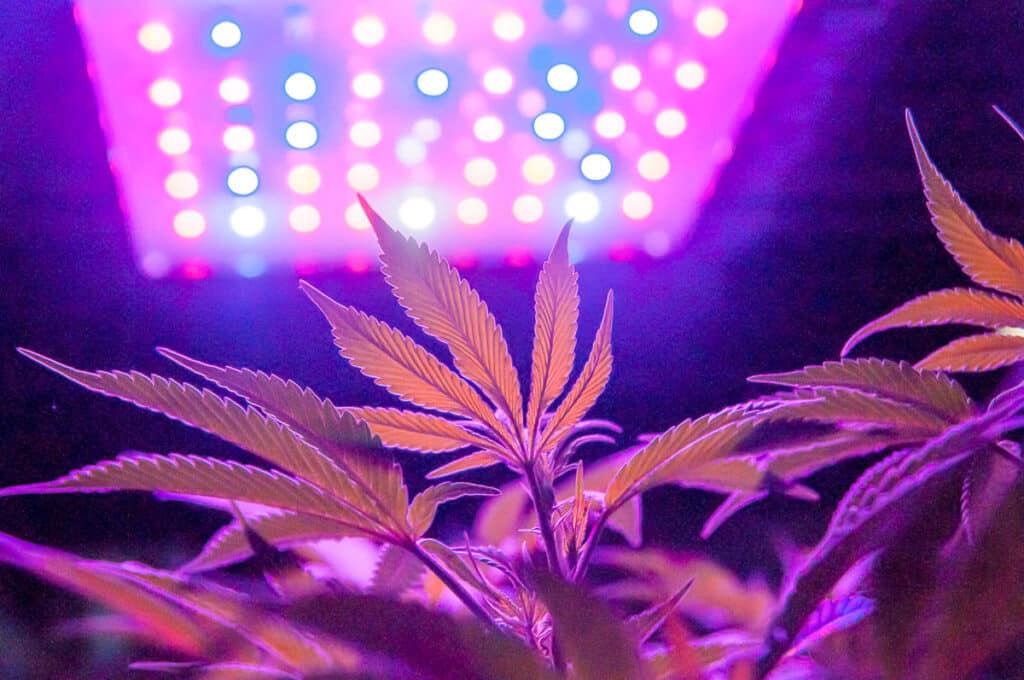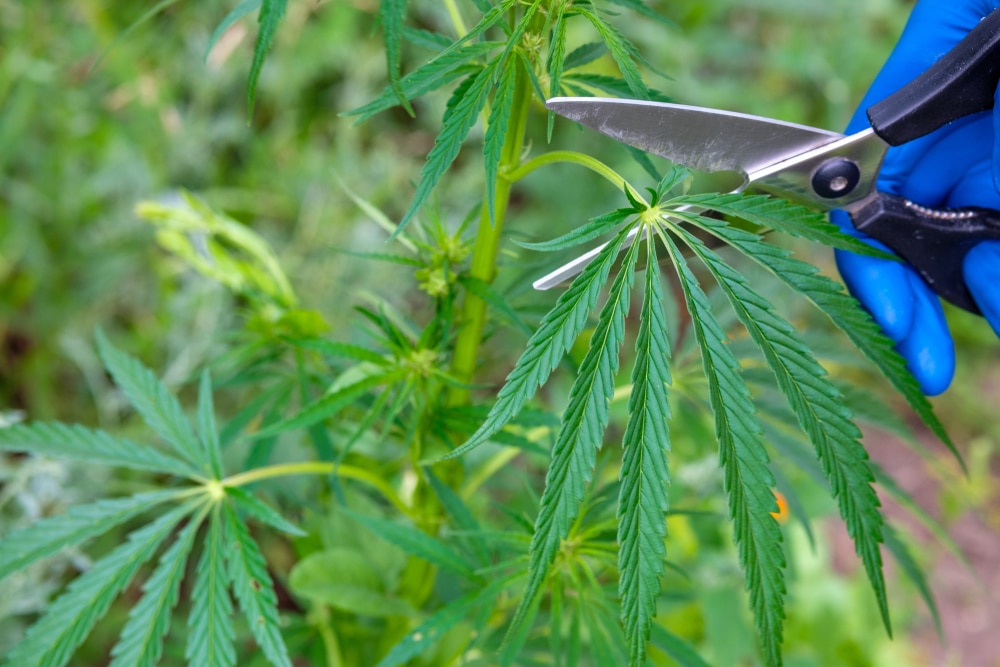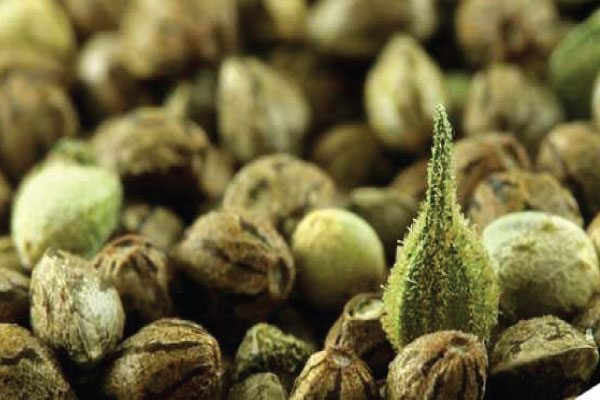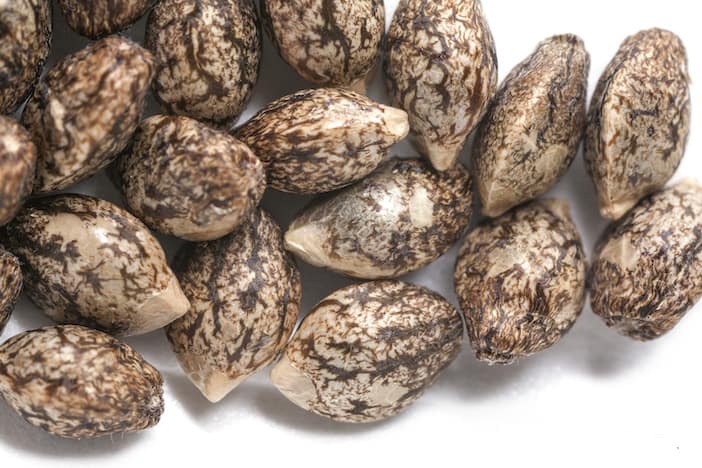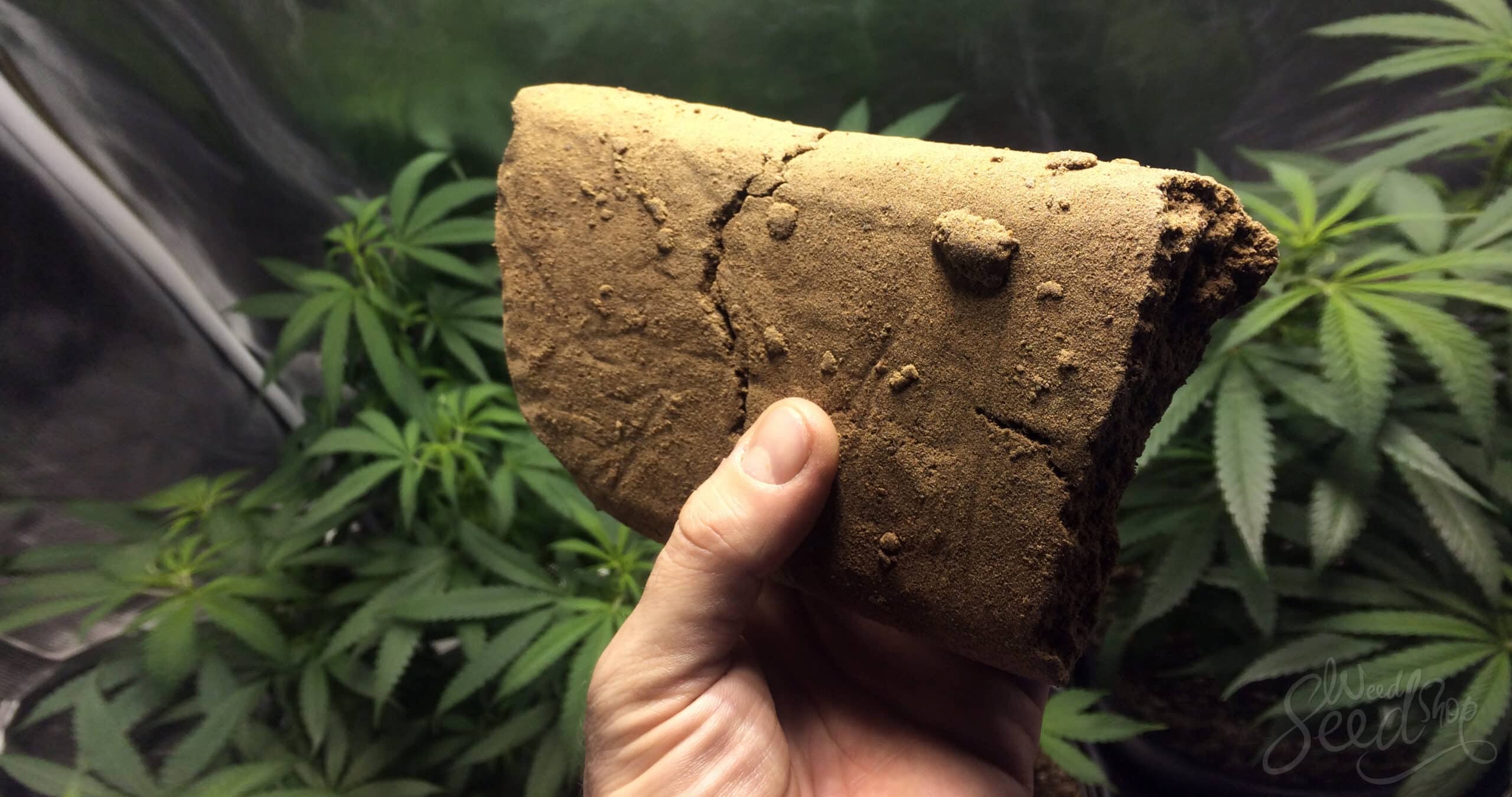No products in the cart.
Marijuana Education
How to Increase Terpenes in Cannabis
Terpenes are volatile compounds that work with the cannabinoids in your cannabis to create the taste and aroma of the flowers. It goes beyond simple genetics, as growers have found that by adjusting certain aspects of the growing process, you can increase terpene production and bump up the flavor of your weed.
Ready to supercharge the flavor of your bud? Keep reading to learn about enhancing the terpene levels in your next weed crop.
Advice #1: Use nutrients & fertilizers
Terpenes are produced from the sugars that are developed through photosynthesis and nutrient uptake processes. Managing both the carbs and sugars will allow you to unlock your plant’s potential for optimal terpene production.
Sugars do different things within the plant, including acting as the main conduit of energy for the plant and promoting a strong structure by turning it into a compound called cellulose, which is found in all plants.
This means you want a feeding program that is full of the right nutrients since they are the elements that drive sugar production. Sugars are formed from carbohydrates and you want to provide your plants with plenty of them during the most productive part of the cycle, the flowering stage.
Ensure to provide your plants with the highest nutrient mixture they can handle around week 4 of flowering as this is when the carbohydrates will be needed to properly develop the terpene profile. Your weed will be prioritizing bud production over roots and leaves, ensure you feed your weed plenty of phosphorus and potassium as the main micronutrients.
Properly fed buds will be dense and filled with resin as the sugar reserves will be high, this is effectively called swelling. The balance is found in feeding the weed plant as much as it can take without overloading it with excess nutrients.
This mentality applies to other growing types beyond soil. Managing the carbohydrates in a hydroponics and aeroponics system is the same concept, just watch your nutrient ratios. If you’re growing naturally with organic nutrients, you should check out our guide on the best organic fertilizer for cannabis.
Advice #2: Light quality & exposure optimization
Cannabis cultivation requires light and dark periods to optimize those precious terpenes. Where synthetic and organic nutrients provide the elements for growing, sunlight is the food that weed needs to energize itself. If you want a rich terpene profile, you need to start with good-quality light. While there is no substitute for the power of our sun, a high-quality lighting system will get the job done.
For outdoor gardens, you want to ensure that your plants have enough space around them so that sunlight can hit each cola and give the buds an even amount of energy. Indoors, using a strong enough light will create a strong canopy of dense buds.
Alternative Metal Halide (MH) for vegetating plants and High-Pressure Sodium (HPS sodium lamp) during flower will provide both heat and strong light exposure for your weed. LEDs work just fine but it has been shown that MH and HPS can increase and alter terpenes.
The downside is that MH and HPS bulbs contain no UV light, which the plant uses to further enhance the flavonoids within.
Low-stress training is a great way to optimize bud site locations and usually involves topping the newest growth or bending your branches down so that every bud on the branch gets maximum light exposure.
Advice #3: Consider UVA & UVB light to increase terpene production
Sunlight provides a complicated spectrum of light that products on the market cannot replicate. UVA and UVB are two common rays that cannabis grown outdoors gains a benefit from. If you are growing indoors, you can supplement your current lighting with some UV light. This will provide the same effects as if they were growing outside.
Keep in mind that too many of these rays can be bad for your plant and certainly bad for your health as well. Trichome production is a way that your plant protects itself from too much UVB. Other times you can see the stems and branches start to turn purple or red as the plant develops its own sunblock to stop additional harm.
UVC light is not used to expand terpene production but can be used to treat issues like powdery mildew and various insects. Always wear protective gear around UV lights, especially if you use UVC to kill molds and pests as this can damage the tissue on your skin.
Advice #4: Optimize temperature & humidity
Much like how phenotypes are affected by the climate, you increase terpene production by altering environmental factors. The optimal growing temperature for weed is between 75 and 80 degrees Fahrenheit (23-26 degrees Celsius). Lowering that temperature can stress out your marijuana enough to increase terpene levels substantially.
Adjusting the temperature 5 degrees lower is probably the most you want to go since any more will create unneeded stress. Going further might hinder your potential yield as the balance is too far tipped to one side.
Having the temperature too cool when the lights go out causes condensation, which can sit on your flowers and turn into bud rot. It’s important to remember that if your temperature goes down too low, your humidity will increase, which may not be beneficial to your terps.
For the flowering stage, you want to keep the humidity level set between 50-60%, progressively lowering it no further than 40% in the final weeks to hinder any mold or fungal growth and stress out the plant just enough to push more trichomes out, improving total terpene content.
Humidity spikes pose a problem, especially with powdery mildew infestations. Keeping it so that your humidity doesn’t change more than a couple of percentages will mitigate any powdery mildew since it proliferates during humidity spikes.
It’s all about maintaining the balance of optimal production and teetering on the edge of a problem by pushing your plant as far as it can go. Controlling your environment makes this process easier for your plant.
Advice #5: Lower night temperatures in bloom
If you follow the idea of growing outdoors, then you’ll understand that colder temperatures send a signal to the plant that winter is coming and it needs to prepare faster. This little bit of added stress can increase trichome and terpene production significantly.
The trick is to not do it too early in the flowering cycle where your buds can become damaged as the cooler temperatures hinder growth. The last week of flowering, when you are performing your flush, is the best time to drop the temperatures when the lights are off.
As the lights come on, you’ll notice that the aroma in the air may be more pungent after lowering the temperature. This is a good sign that your plant has taken the cue and has put even more energy into the trichomes.
Advice #6: Stop feeding your cannabis plants before harvest
For the majority of the flowering stage, you will be pushing your plant full of useful nutrients to develop the carbohydrates necessary for sugar production to increase terpenes. However, continuing to do so right until harvest time may lead to excess nutrient buildup in your buds. This can alter the taste and smoke of your flowers, even if you dried and cured them correctly.
This process is also known as flushing and it involves running pure water through your growing medium until the EC of your soil is very low. Doing this encourages your plants to use up the nutrient reserves so that all you have is the pure taste of the flower you grew. In terms of how to increase terpenes, this doesn’t make more of them, only lets you taste and smell them better.
This only applies to growing mediums such as soil or a substrate like Rockwool or Coco Coir since they can act as a buffer and hold nutrients inside them.
If you are growing directly in the water using hydroponics or in the air with aeroponics, you still need to flush. But essentially all you have to do is replace the nutrients in your reservoir with plain water. While you may need a week or two to completely flush your plant in soil, a hydroponics grower can do the same thing a few days before harvest since there is no buffer to override.
Tap water is sufficient enough for your plants, even though it contains trace amounts of several macronutrients, but reverse osmosis or distilled water that has been pH corrected would be your best bet since they have a very low electrical conductivity.
Advice #7: Reduce cannabis plant stresses
The flowering stage is a crucial time as different chemicals and processes are delicately interacting with each other to direct energy into buffing up the terpene profile. While a little bit of stress is great to improve your terpene profile, continuing stress can damage terpenes and adversely affect yield.
Here are some of the common stress factors that can affect the yield and the terpene profile of your plants:
- High-temperature fluctuations including extended periods at high or low temperatures.
- Incorrect pH values in your water cause nutrient lockout or root damage.
- Inconsistent light cycles or light leaks into the grow space during the night.
- Too much light stress can cause terpenes to degrade and lose potency
- Over- or under-watering can damage the root system, hindering the highway used to transport vital nutrition
- Physical damage to your plants can impact their health and decrease the number of terpenes found in your bud.
- Powdery mildew and other molds find their way into your flowers, starting to rot them from within. If your plant is under stress, it will have a difficult time fighting back to protect itself.
- Insect infestations such as spider mites can decimate a crop if not addressed promptly. They feed off the sap in the plant, which is detrimental to your total terpene content.
- Incorrect low-stress training techniques may damage the plant and fail to increase terpene levels.
If you’re growing cannabis plants outside, then you will have a more difficult time controlling the wild aspects of mother nature. Enthusiastic outdoor growers will build their greenhouses in an attempt to balance indoor and outdoor growing conditions with great success.
Advice #8: Correct harvesting
Terpenes are found within the resinous trichomes that coat your flowers in that white, frosty goodness. It is essential to understand the best time to harvest cannabis as trichomes have different maturities based on where your plant is in its current cycle. In terms of maximizing terpenes, you don’t want to harvest them too early or too late as there is somewhat of a shelf life for terpenes and trichomes.
Looking at your plant’s trichomes is easy if you have a magnifying glass, jeweler’s loupe, or a really good zoom feature on your phone. Pay attention to the buds and the sugar leaf as that’s where you’ll be determining if your trichomes are ready or not.
Here are the different colors of trichomes and what they mean:
Clear trichomes – Clear means that they are immature with the THC and terpenes not yet fully developed. This affects the high and taste as much as it does the potency. Ideally, this is not the best time to harvest your cannabis. Expect to feel a bright, head-centered high if consumed at this time.
Milky, opaque trichomes – Fully mature trichomes provide the head high and a semi-potent body high. The terpene profile is developed with many different terpenes commonly found mixing with each there.
Amber, brown trichomes – This is a sign that the trichomes have started to break down and turn into CBN, a cannabinoid that is known for its sedated high. The terpene content found inside the trichomes is still rich and full of flavor. Leaving it any longer will be too late as the trichomes will have degraded too much.
The best time to harvest your weed is when half of your trichomes are cloudy (mature) and half of them are amber (just past maturity). This gives you a good combination of strong flavonoids and different potency effects based on whatever strain you’re growing.
Advice #9: Trim and dry properly to save all aromatic compounds
There are two ways to process your weed after a successful harvest. A cannabis grower can decide whether or not to do a dry trim or a wet trim. Both of these methods have pros and cons for the terpenes found in your weed. This tip will give you some overall advice on drying your plant, for a more in-depth view, check out our post on drying cannabis.
Dry trimming involves hanging your plant branches – This is considered the original way of drying and all you have to do is cut down your plant and hang it until it’s dry, usually around days at 50% humidity and between 15-20 degrees Celsius. Afterward, the grower will buck the branches and trim up the bud before transferring it into jars to be cured. This method preserves a lot of the trichomes from the plant but since they are now fragile glass-like structures, they can be prone to breaking as you handle the dried bud.
Wet trimming is done immediately after harvesting using scissors or a machine – Trimming up your bud right after harvest allows you to dry the individual nugs separately and after processing. Doing this preserves a lot of the trichomes that you may lose while doing a dry trim. However, the amount of handling done with hand trimming can damage terpenes through the oils in our fingers or break the trichomes as you trim.
Using a trimming machine is a good option as you’re able to catch a lot of the trichomes that fall off the buds. The issue is that the tumblers are so rough with buds that by the time they are out of the machine, a substantial amount of their terpene levels have been reduced with the loss of the trichomes. If you’re interested in wet trimming your nugs, check out our article on how to trim cannabis plants.
Advice #10: Choose Terpene-rich cannabis seed genetics
There are many different terpenes to choose from and many of them exist in the same weed strains. The Seed Fair has a complete breakdown of all of their strains including a full terpene levels analysis so that you know what to expect from our high-quality genetics. We offer free shipping over $99 and include free seeds with every order to get the most out of your cannabis terpenes during your next grow.
Our customer service team loves to grow and are cannabis connoisseurs in their own right. Feel free to reach out and ask us any questions you might have about your seed purchase. Join our cannabis community where you can read helpful tips and tricks to get you started on your favorite cannabis strains.


